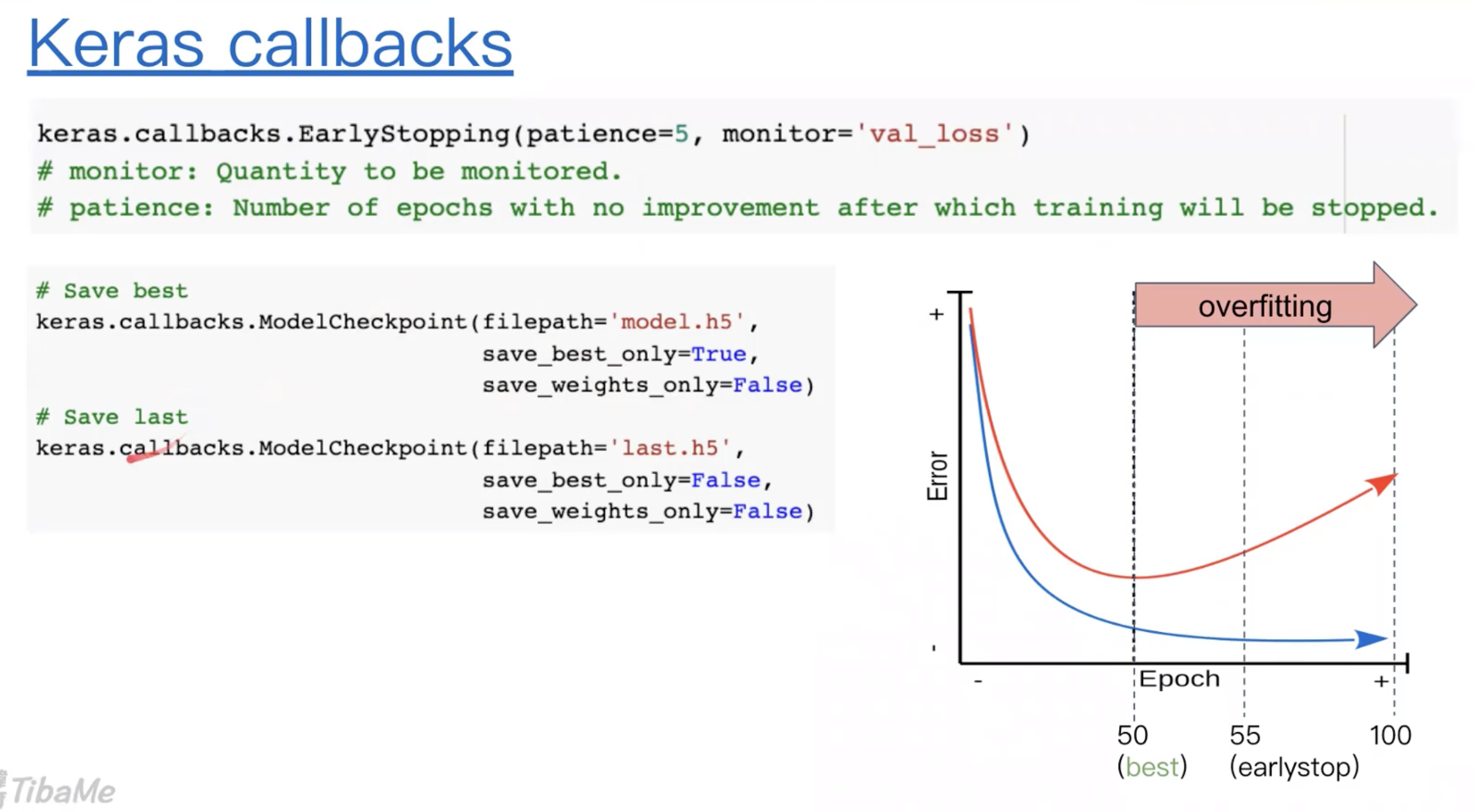Keras
graph TB
k[keras]-->tensorflow
k-->CNTK
k-->theano
模型
flowchart LR
x[X]--Wi-->Zi-->Y
梯度下降
每次往微分最小方向走一步
find min of f(x)
Lost function
: true value
: prediction
Mean square error
Mean Absolute Error
Binary Cross Entropy (評估二元分類)
分類
正規化
graph LR
z[z]-->s[softmax]-->y
Multi-class
考慮n維uni cube
Lost function
Categorical cross function
捲積
對應位置用卷積核當係數線性組合
tf.keras.layers.Conv2D( filters, kernel_size, strides=(1, 1), padding='valid', data_format=None, dilation_rate=(1, 1), activation=None, use_bias=True, kernel_initializer='glorot_uniform', bias_initializer='zeros', kernel_regularizer=None, bias_regularizer=None, activity_regularizer=None, kernel_constraint=None, bias_constraint=None, **kwargs )
三劍客
convolution
Batch Normalisation
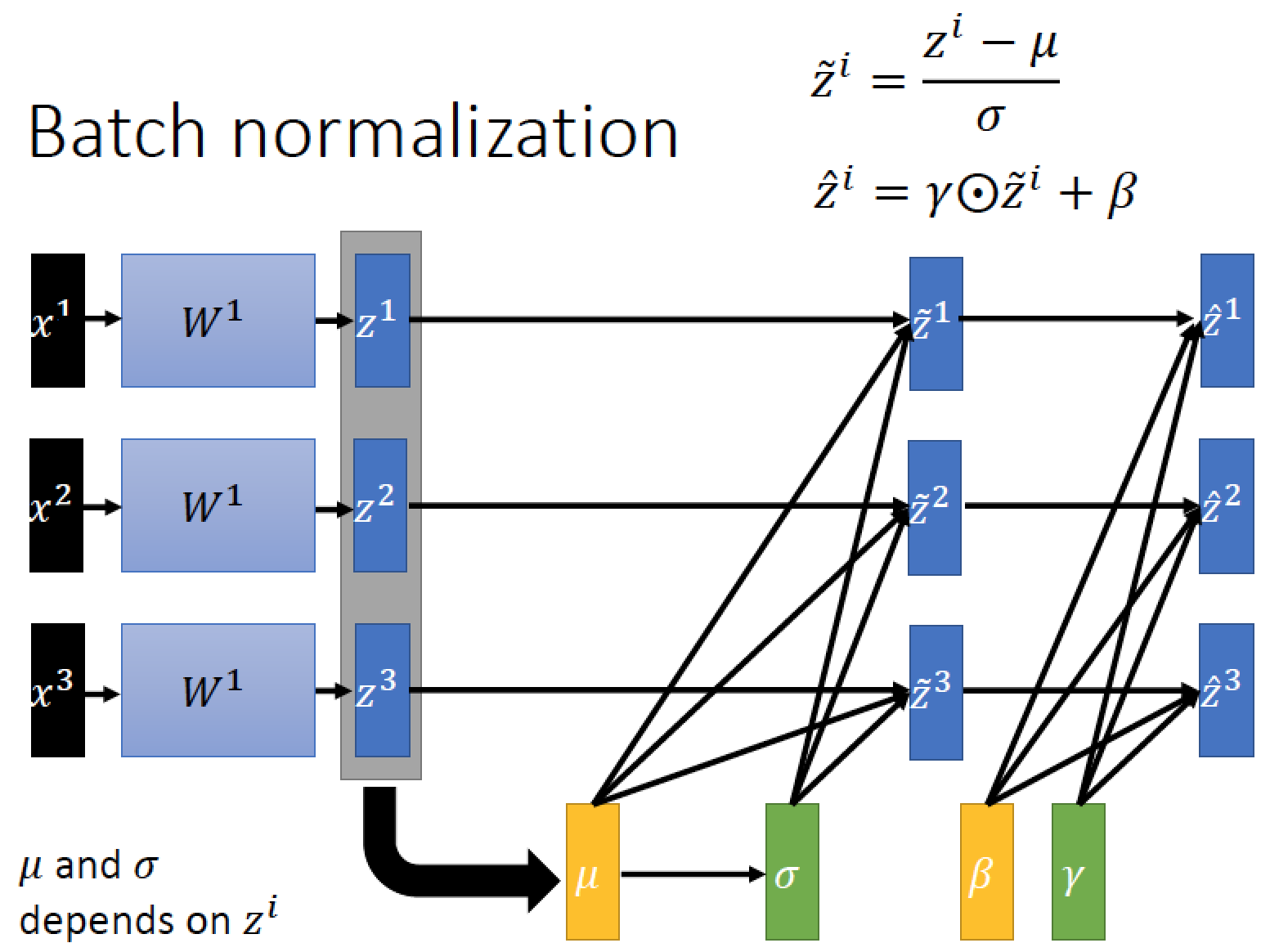
ReLU
example
def conv_bn(x, filters): x = tf.keras.layers.Conv2D(filters=filters,Kernel_size=3, padding='same')(x) x = layers.BatchNormalization()(x) x = layers.ReLU()(x)
實作
import tensorflow as tf from tensorflow.keras import datasets, models, layers, utils, activations, losses, optimizers, metrics import numpy as np import matplotlib.pyplot as plt import cv2 import os from glob import glob from tqdm import tqdm from sklearn.model_selection import train_test_split import pandas as pd
遷移學習
# Method 1 # clear graph tf.keras.backend.clear_session() #base_model base_model = tf.keras.applications.EfficientNetB0(include_top=False, weights='imagenet', # None input_shape=(IMG_SIZE, IMG_SIZE, 3) ) x = base_model.output # Classifier x = layers.GlobalAveragePooling2D()(x) x = layers.Dense(256, activation='relu')(x) x = layers.Dropout(0.3)(x) x = layers.Dense(256, activation='relu')(x) x = layers.Dropout(0.3)(x) x = layers.Dense(256, activation='relu')(x) x = layers.Dropout(0.3)(x) predictions = layers.Dense(3, activation='softmax')(x) # Freeze for l in base_model.layers: l.trainable = False #建構模型 model = models.Model(base_model.input, predictions) model.summary() #編譯模型 model.compile(optimizer='adam', loss=losses.categorical_crossentropy, metrics=[metrics.categorical_accuracy]) #訓練 logs = model.fit(x_train, y_train, batch_size=30, epochs=30, validation_data=(x_val, y_val))
Callback & Save
手刻 Early stopping
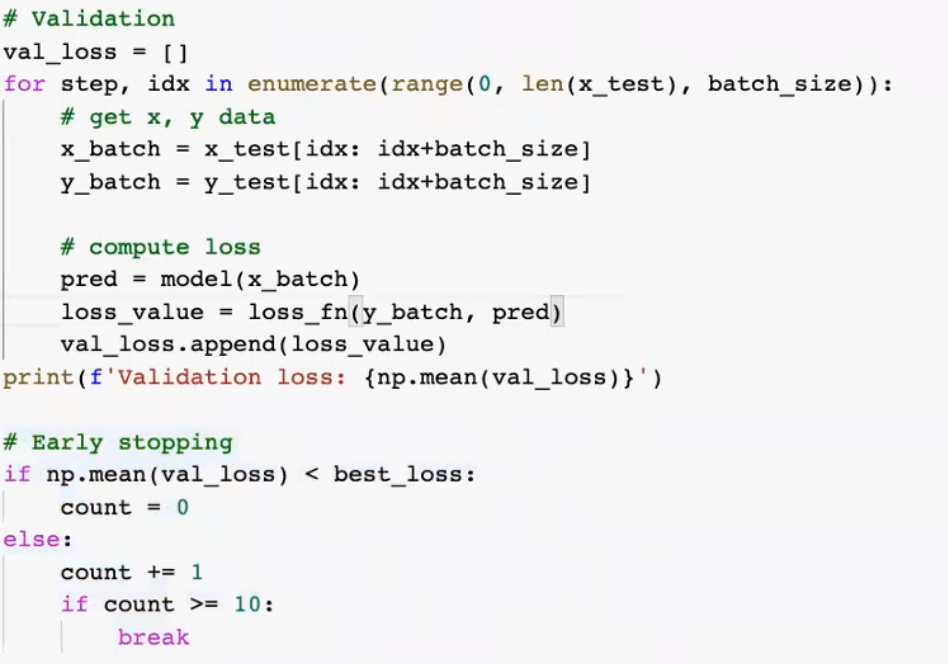
資料擴增(Data Augmentation)
Imgaug
Detail
https://github.com/aleju/imgaug
Data Generator
省內存
https://www.tensorflow.org/api_docs/python/tf/keras/utils/Sequence
繼承utils.Sequence,需要實作
- def __len__: number of batches per epoch
- def __getitem__(idx): get the idx-th batch
- def __on_epoch_end__: called at the end of epoch
class DataGenerator(utils.Sequence): def __init__(self, paths, batch_size, img_size, mode='train'): self.paths = paths self.batch_size = batch_size self.mode = mode self.img_size = img_size self.shuffle = mode == 'train' #打亂 self.idxs = np.arange(len(self.paths)) # [0, 1, 2, ..., len(self.paths)-1] self.all_class = ['normal', 'bacteria', 'virus'] self.class_map = {cls: i for i, cls in enumerate(all_class)}#類別to num self.num_classes = len(self.class_map) self.on_epoch_end()#洗牌 # augmentation # self.aug = imgaug.... def __len__(self): #讀完幾批是一個epoch 'number of batches per epoch' return int(np.ceil(len(self.paths) / self.batch_size)) def __getitem__(self, batch_index):#取資料 # Generate idxs of the batch idxs = self.idxs[batch_index*self.batch_size: (batch_index+1)*self.batch_size] # Find list of IDs batch_paths = [self.paths[i] for i in idxs] # Generate data return self.__data_generation(batch_paths) def on_epoch_end(self):#洗牌 if self.shuffle: np.random.shuffle(self.idxs) def __data_generation(self, paths):#準備資料 """ Generates data containing batch_size samples """ x = np.empty((len(paths), self.img_size, self.img_size, 3), dtype=np.float32) y = np.empty((len(paths))) for i, path in enumerate(paths): img = cv2.imread(path)[:, :, ::-1] # img preprocess img = cv2.resize(img, (self.img_size, self.img_size)) # # TODO: Data Augmentation # if self.mode == 'train': # img = self.aug.augment_image(img) # Preprocess img = img / 255. # img = tf.keras.applications.efficientnet.preprocess_input(img) x[i] = img if self.mode != 'test': # read class label cls = path.split(os.sep)[-2].lower() if cls == 'pneumonia': # get filename filename = path.split(os.sep)[-1] # get pneumonia subclass cls_pneumonia = filename.split('_')[1] cls_idx = class_map[cls_pneumonia] # for normal class else: cls_idx = class_map[cls] y[i] = cls_idx#y紀錄train 的類別ID if self.mode != 'test': # one-hot encoding y = tf.keras.utils.to_categorical(y, num_classes=self.num_classes) return x, y else: return x
處理資料
IMG_SIZE = 256 BATCH_SIZE = 64 all_class = ['normal', 'bacteria', 'virus'] # 'normal':0, 'bacteria': 1, 'virus':2 gen_train = DataGenerator(img_paths_train, BATCH_SIZE, IMG_SIZE, mode='train') gen_val = DataGenerator(img_paths_val, BATCH_SIZE, IMG_SIZE, mode='val') gen_test = DataGenerator(img_paths_test, BATCH_SIZE, IMG_SIZE, mode='test') # def __len__(): batches per opech len(gen_train), len(gen_val) # get 1 batch # def __getitem__(self, batch_idx) imgs, labels = gen_train[0]
fit model
model.fit(gen_train, validation_data=gen_val, epochs=10)
Prediction
predictions = model.predict(gen_test)
影像分割
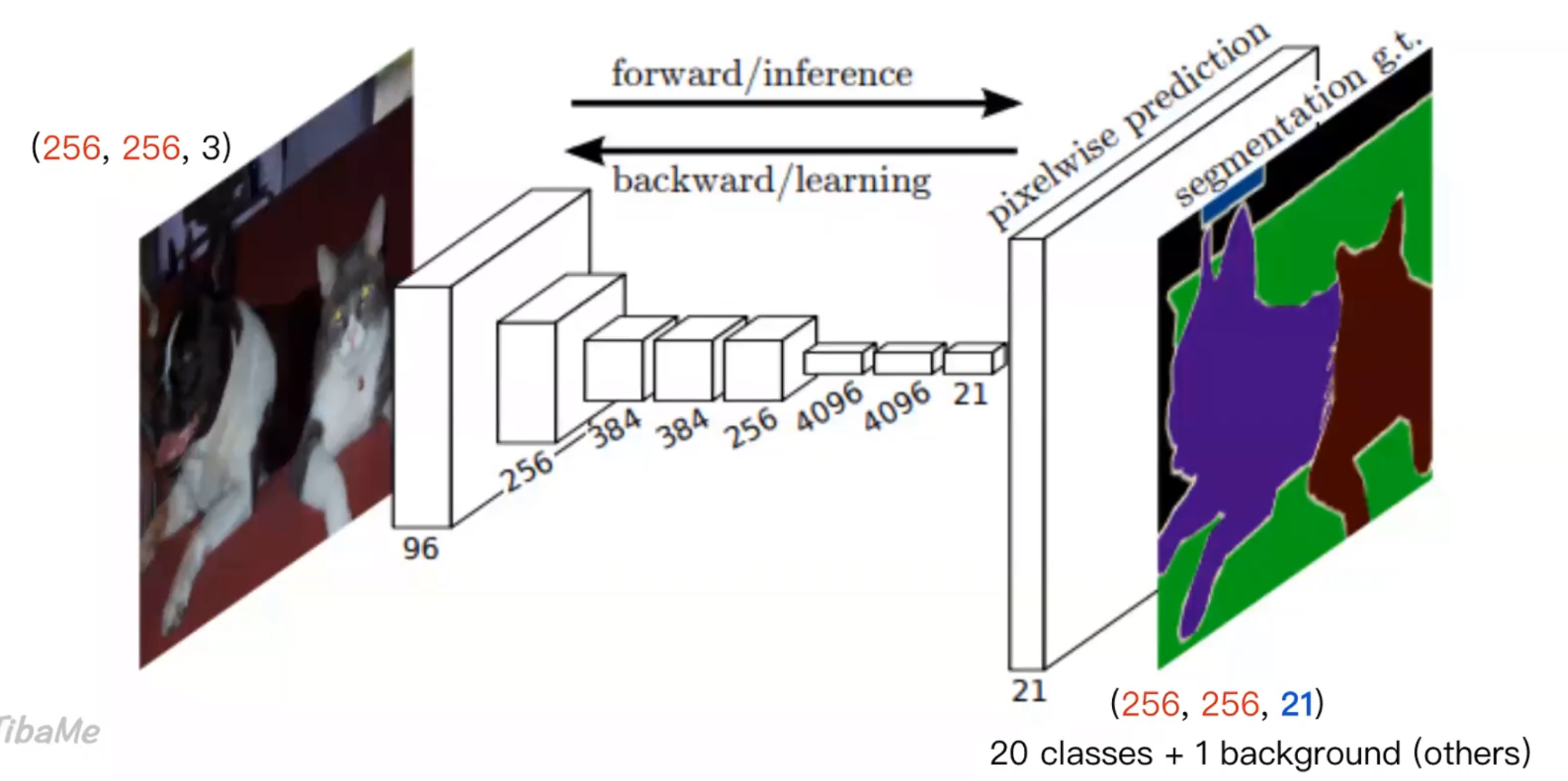
放大方法: 特徵融合,擷取各層
放大
- Upsampling 一模一樣
- transposed convolution
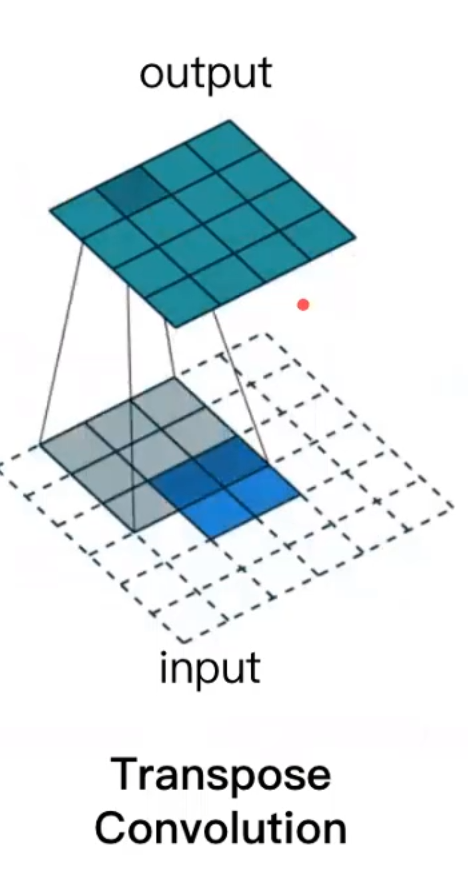
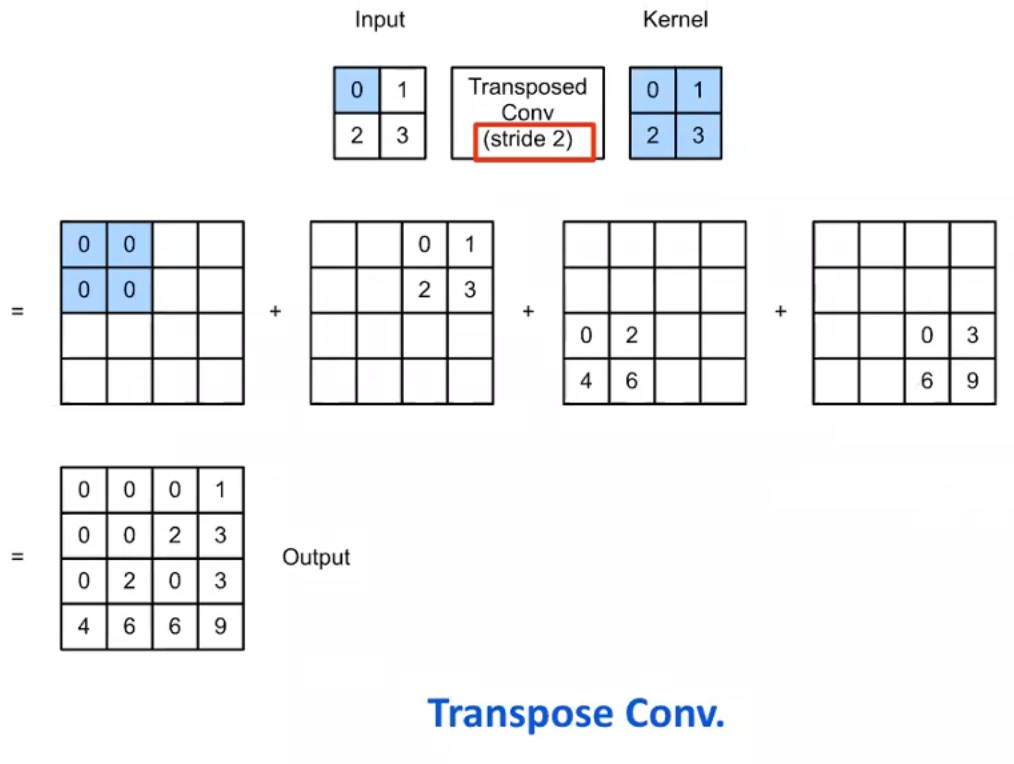
即時影像偵測\
YOLO v1
Step 1
49 格,分類
Step 2
中心在某格裡面的物件
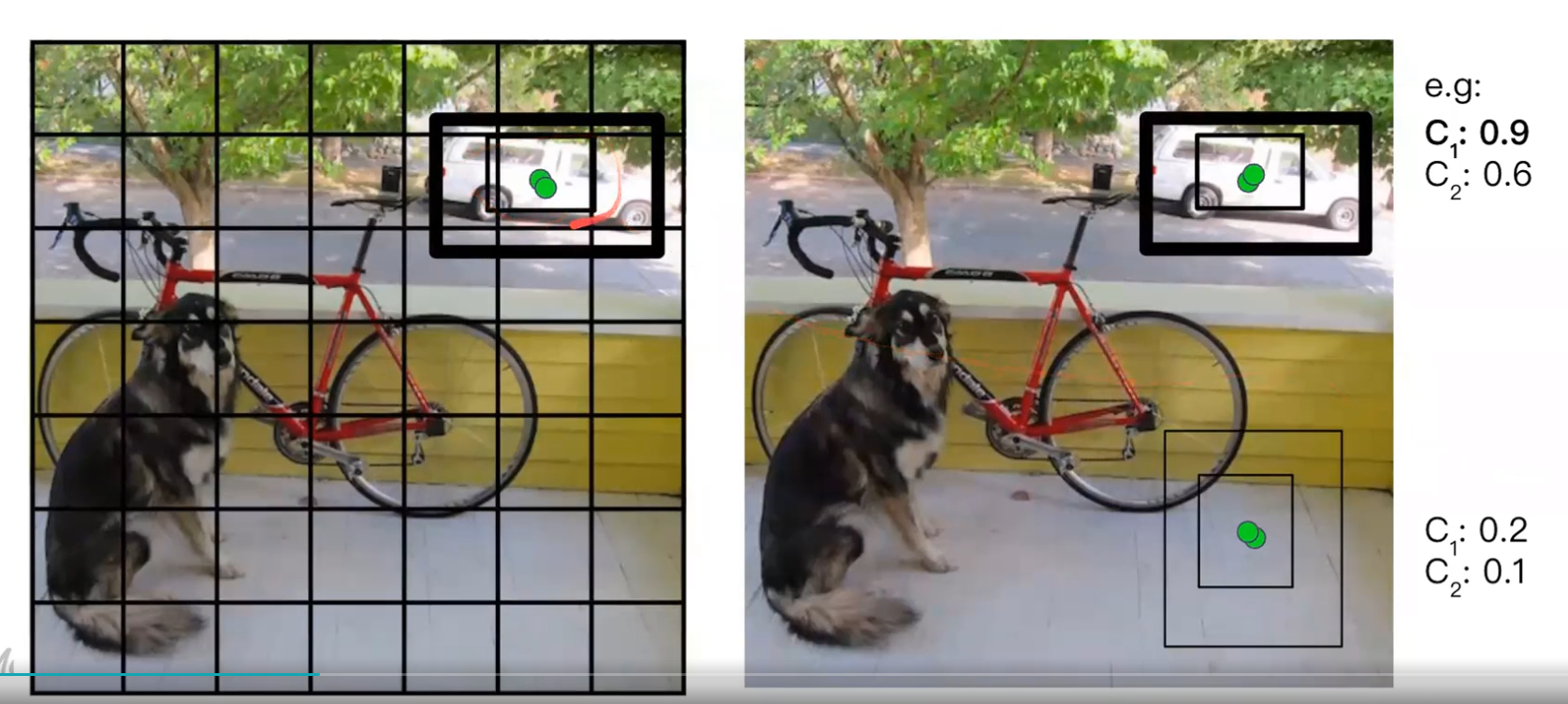
Step 3
根據中心位置給框框類別
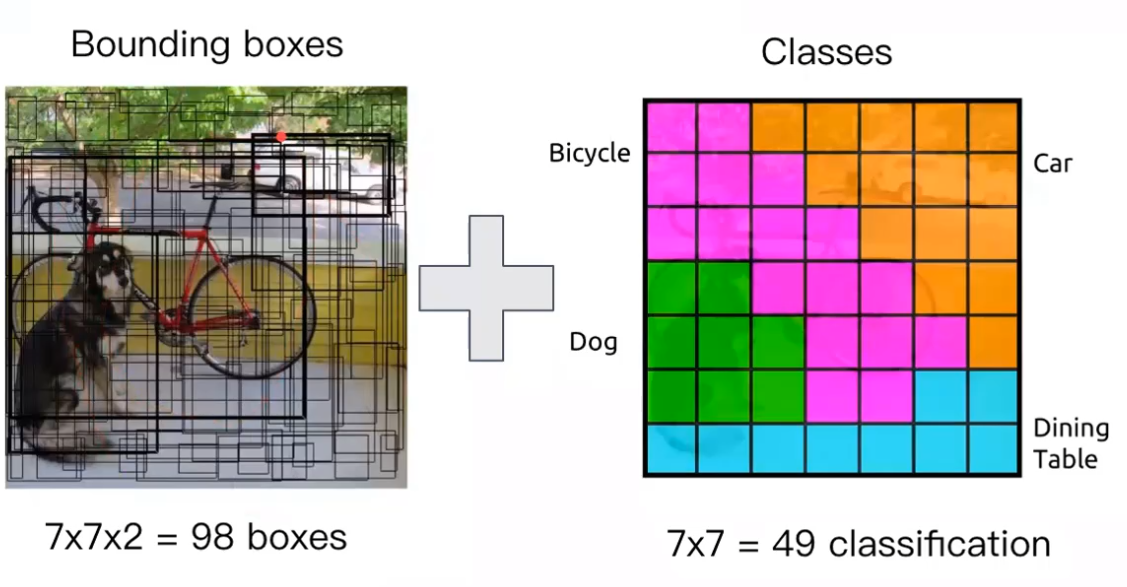
Step 4
NMS (選出最有可能的方框框)
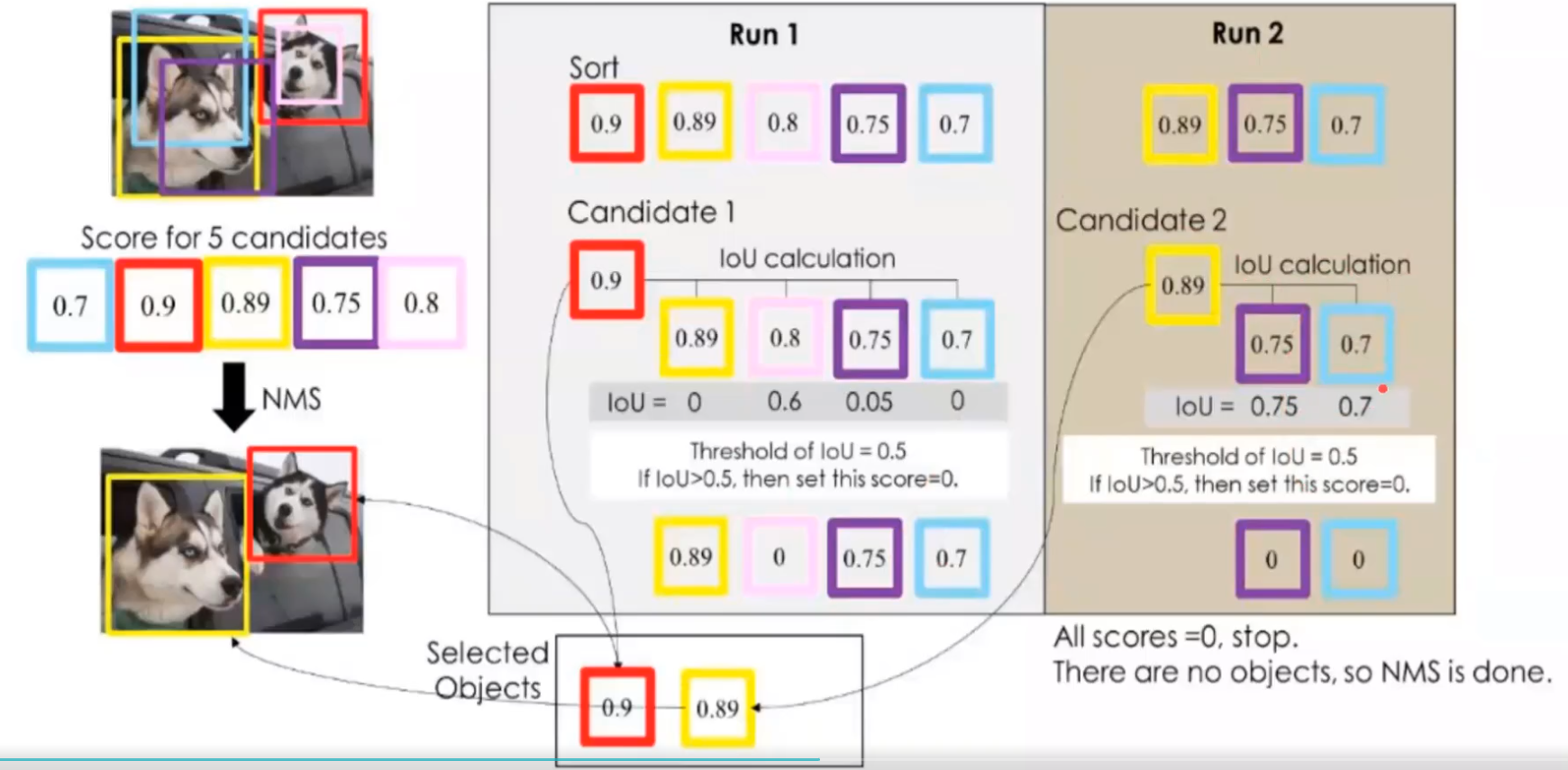
模型
最後7x7x30
前10:兩格框
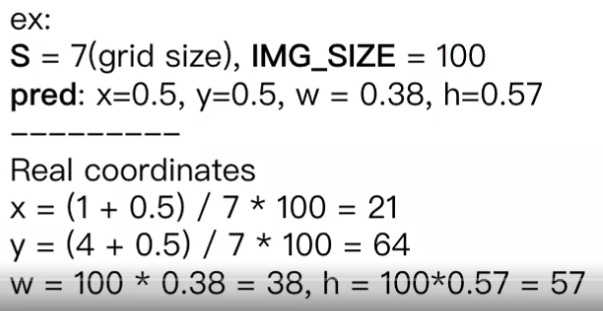
後20:類別
Loss function
Label
中文路徑gg
ssssss
